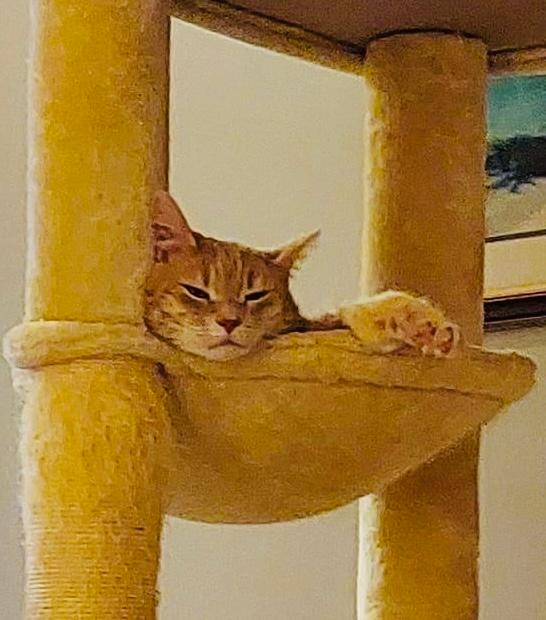We have wondered about cat skin problems for quite some time. Then we found an article about it on Catser. We want to share it now.
Cat skin problems are, unfortunately, pretty common. Parasites such as fleas or mites, fungal or bacterial infections, allergies, stress, injury or, more rarely, hormonal imbalances cause cat skin problems. Here are 10 common cat skin problems and how to handle each:

1. Abscess:
Abscesses are one of many common cat skin problems. An abscess is a painful collection of pus at the site of a bite or puncture wound. Abscesses form a firm swelling that becomes soft with time and can rupture and spill out purulent discharge. Although most cat fight-related abscesses are found on a cat’s forequarters or abdomen, they can sometimes appear near the tail if a cat gets bitten while trying to flee. The best way to prevent abscesses is to keep your cat indoors.
2. Ear Mites:
If your cat is tilting and shaking her head, scratching at her ears, and has excessive brown or waxy material in her ear canal, she may have ear mites. This condition causes tremendous itching and irritation, and if left untreated, can lead to bacterial infection. Ear mites in cats are treated by applying ear drops that contain a mite-killing chemical and cleaning the ears with a cotton ball.
3. Contact Dermatitis:
Cat skin problems sometimes show up as red, itchy bumps. With contact dermatitis, you’ll see those red, itchy bumps and inflamed skin at the site of contact with a chemical or other irritant. Rubber or plastic food dishes can also cause contact dermatitis. The best way to prevent contact dermatitis is to keep cats away from areas where you use any chemicals and to feed your cats with glass, stainless steel or lead-free ceramic bowls or dishes.
4. Feline Acne:
In feline acne, comedones (also known as blackheads) form on the underside of the chin and edges of the lips. Plastic or rubber food and water dishes may cause cat acne. In severe cases of this skin condition, antiseborrheic shampoos, such as those containing benzoyl peroxide (at a concentration of 3% or less) or benzoyl peroxide gels, work to break down the excess oils. Supplementation with Omega-3 or Omega-6 fatty acids may be beneficial, but check with your vet first.
5. Flea Allergy Dermatitis:
Some cat skin problems, like flea allergy dermatitis, manifest as itchy, pimple-like bumps that form over the base of the tail, back of the rear legs and inner thighs. Although many cats can get fleas and not have any reaction, in sensitive cats it can take just one flea bite to cause hours or days of symptoms. The best way to prevent flea allergy dermatitis is with good flea control. “Spot-on” treatments sold at veterinarians’ offices and reputable online outlets are typically the most effective, but there are a number of chemical-free methods that can be effective when used properly.
6. Food Allergy Dermatitis
Some cats are very sensitive to certain ingredients or preservatives in their food. This sensitivity can result in severe itching over the head, neck and back, and swelling of the eyelids. It is often complicated by hair loss and oozing sores from constant scratching and biting. Treatment for cat skin problems like this typically involves an elimination diet to see what ingredient(s) the cat is reacting to. Some vets may give steroid shots to ease the swelling and itching and give the skin a chance to heal from any damage.
7. Psychogenic Alopecia:
This is the thinning of the fur in a stripe down the back or on the abdomen caused by compulsive self-grooming. Stress often causes compulsive grooming, so treatment involves minimizing the affected cat’s stress level through use of feline pheromone diffusers, creating a calm environment, and redirecting the cat’s nervous energy through play. In severe cases of hair loss in cats, vets may recommend a short course of anti-anxiety medication.
8. Ringworm:
Ringworm is a fungal infection that is highly contagious to other animals and to humans. Symptoms of this skin condition include round patches that show central hair loss with a red ring at the periphery. In some cats, it only shows as broken hairs around the face and ears. Ringworm requires veterinary treatment with antifungal medications and extensive cleaning and sterilizing of the home.
9. Stud Tail:
Glands near the tail that excrete excessive oils cause stud tail in cats. The result is a greasy, rancid-smelling waxy brown material at the top of the tail near the base. This condition is most often often found in un-neutered toms, but fixed males and females can get it, too. Treatment of stud tail in cats involves neutering if needed, and twice-daily washes with an antiseborrheic shampoo to break down excess oils.
10. Sunburn
Yes, sun exposure makes the list for cat skin problems, too! Cats with light-colored fur and hairless breeds such as the Sphynx are very prone to sunburn and should be kept out of direct sunlight between 10 a.m. and 2 p.m. to reduce the risk of sunburn and minimize the long-term risk of developing skin cancers such as melanoma.
The bottom line on cat skin problems
If you suspect your cat has one of these common cat skin problems, examine the affected area, take note of the symptoms you see and contact your vet. Any of these cat skin problems, as well as unexplained nodules, bumps or open sores or scabs on your cat, should get checked by your veterinarian for accurate diagnosis and treatment.

